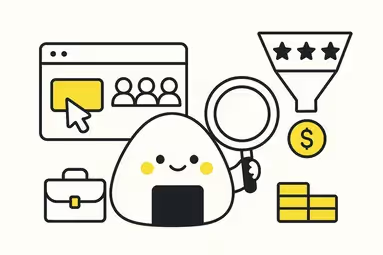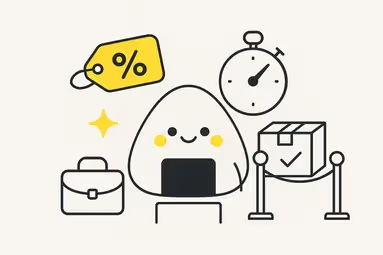.webp)
Interim Product Manager: When Contract Beats Full-Time
Discover when an interim product manager delivers better results than a full-time product manager. Learn the benefits of contract product management.

Introduction
Let's be honest about a scenario that keeps startup founders and product leaders up at night:
🚨 Your product launch is slipping further every week.
🧩 Engineering and design can't agree on priorities.
⚡ The board wants aggressive scaling, but your team is drowning.
You know you need product management expertise, but the traditional hiring playbook feels wrong. Do you really want to spend three to six months recruiting a full-time product manager when things are on fire today?
That's where an interim product manager changes the game.
Unlike full-time product managers who take months to source and onboard, an interim product manager (also called a contract product manager or fractional product manager) jumps in immediately, bringing senior-level expertise exactly when—and for exactly as long as—you need it.
What Makes Interim Product Managers Different
Here's the thing: interim product managers aren't temp workers or consultants who write reports and disappear. They're seasoned product leaders who've navigated chaos before and know how to move fast.
While a full-time product manager might spend their first month just understanding your tech stack and team dynamics, an interim product manager has likely seen your exact situation three times already. They diagnose problems quickly, cut through ambiguity, and start shipping results within days.
For example, when Scoutbee needed a conversational AI MVP, an interim product manager launched it in just 8 weeks while significantly expanding their supplier database and reducing search time by 99.8%.
When to Hire a Contract Product Manager
Speed Matters More Than Perfect Fit
The full-time scenario: You post a job, wait for applications, screen dozens of candidates, run multiple interview rounds, negotiate offers, and then wait out notice periods. Best case? Twelve weeks. Realistic case? Closer to six months.
The interim product manager approach: You have someone in your Slack by Monday, sitting in on standups by Wednesday, and presenting their first strategic recommendations by Friday.
When your product roadmap can't wait for the perfect hire, interim product managers deliver the velocity you actually need.
Problem-Solving Over Process-Building
Most full-time product managers are expected to do it all: define long-term vision, build frameworks, grow teams, establish rituals. That's valuable—eventually.
But when your biggest problem is an out-of-control backlog or stakeholders pulling in five different directions, you don't need someone to design the perfect OKR structure. You need someone to untangle the mess and get everyone aligned on what ships next.
That's what interim product managers excel at. They focus on the burning issue, not the org chart three years from now.
Navigating Uncertainty and Change
Mergers. Pivots. Leadership transitions. Sudden market shifts. These are the moments when full-time product managers often struggle—either because they're not experienced enough to handle the ambiguity, or because they're inheriting a mess they didn't sign up for.
A contract product manager thrives in exactly these conditions. High-stakes, high-ambiguity situations are their natural habitat. They bring structure when everything feels chaotic and create clarity when the path forward isn't obvious.
When AVIV Group faced critical backend service delivery challenges, interim product managers restored momentum and enabled multi-market launches without missing a beat.
Why Fractional Product Managers Make Financial Sense
Let's talk numbers. A senior full-time product manager easily costs $150K–$250K in salary, plus equity, benefits, and overhead. And if your business model shifts or funding changes six months in, you're stuck with a significant fixed cost.
The benefits of interim product management include paying only for the expertise you need, when you need it. Three months to stabilize your product org before a funding round? Six months to bridge until your permanent hire starts? A fractional product manager gives you senior product leadership without betting your budget on a long-term commitment you're not ready for.
Bridging the Gap While You Hire
Here's a scenario that plays out constantly: You know you want to hire a full-time product lead. You've even started looking. But great candidates aren't available tomorrow, and your product work can't sit idle for three months.
This is where interim product managers bridge leadership gaps perfectly. They keep momentum going while you conduct a thorough search. And when your full-time product manager finally starts? Your interim product manager can help onboard them, transfer context, and set them up for success. Zero momentum lost.
Whether it's delivering data-validated MVPs for EdTech platforms or defining scalable B2B visions for international companies, interim product managers ensure your product initiatives never lose steam during transitions.
Interim Product Manager vs Full-Time Product Manager: The Reality Check
Stop thinking about interim product managers as a compromise or a temporary fix. They're a strategic tool for smart product organizations.
If your team is facing sudden change, leadership gaps, high-stakes delivery pressure, or the need for fast impact, you might not need a full-time solution. Not yet, anyway.
What you need is someone who can:
- Hit the ground running without a three-month ramp period
- Build trust fast across engineering, design, and business stakeholders
- Drive tangible results from day one, not quarter three
- Transfer knowledge cleanly when it's time to transition
That's exactly what great interim product managers deliver.
How Interim Product Managers Bridge Leadership Gaps
The best interim product managers don't just "fill in." They actively strengthen your product organization by:
Stabilizing chaotic situations. When priorities are unclear and teams are thrashing, an interim product manager brings structure and focus. They help everyone understand what's important and why.
Teaching while doing. Good interim product managers don't just solve problems—they build capability. Junior team members learn by watching how an experienced product leader makes decisions and communicates with stakeholders.
Providing honest external perspective. Sometimes you're too close to your own product challenges. A contract product manager brings fresh eyes and hard-won pattern recognition from other companies.
Creating clean handoffs. When their engagement ends, strong interim product managers don't leave knowledge gaps. They document decisions, explain context, and set up whoever comes next for success.
Real-world examples show the impact: from transforming organizations into product-led companies to coaching product teams through strategic upskilling, interim product managers leave lasting improvements that benefit the entire organization.
The Bottom Line
If you're wondering when to hire an interim product manager, ask yourself: Can your product organization afford to wait three to six months for the perfect full-time product manager? Or do you need senior product expertise starting next week?
For startups navigating fast growth, established companies facing unexpected leadership gaps, or any product team dealing with urgent delivery pressure, interim product managers aren't just a stopgap. They're often the smartest move you can make.
You get experienced product leadership, focused execution, and the flexibility to adapt as your needs evolve—without the risk and overhead of a premature full-time product manager.
Sometimes the best long-term strategy starts with the right short-term solution.
FAQs
An interim product manager is a senior product leader who works with your team on a contract or temporary basis, providing strategic product management expertise without the commitment of a full-time product manager. They're also called contract product managers or fractional product managers.
Hire an interim product manager when you need immediate impact (within days, not months), when facing urgent challenges like product launches or team realignment, when bridging a leadership gap while recruiting, or when navigating high-uncertainty situations like pivots or transitions.
The benefits of interim product management include faster time-to-impact, access to senior expertise without long-term commitment, flexibility to scale up or down as needs change, lower financial risk compared to full-time product managers, and the ability to keep product momentum while searching for permanent leadership.
A contract product manager is embedded in your team, making day-to-day product decisions and driving execution—not just advising. They attend standups, run sprint planning, work directly with engineering and design, and own outcomes. Consultants typically provide recommendations from the outside.
Fractional product manager engagements typically last three to twelve months, depending on the challenge. Some companies use them to bridge a specific gap (like a three-month product launch), while others work with fractional product managers on an ongoing part-time basis for sustained strategic support.
Absolutely. One of the smartest uses of an interim product manager is having them maintain momentum while you conduct a thorough search for a full-time product manager, then help onboard and transfer context to your permanent hire when they arrive.
Read More Posts
.webp)
WSJF: Prioritize Features with Weighted Shortest Job
.webp)
Product Requirements Document: A Practical PRD Guide
.webp)
Acceptance Criteria: Write Clear Requirements Fast

Product-Led Growth: Is It Right for Your Company?

Black Friday Lessons for PMs: Ship Fast, Stay Sane



